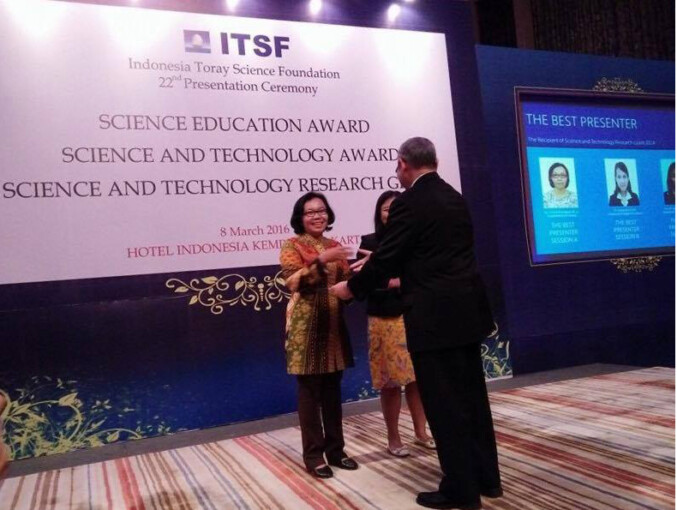
Lecturer of Faculty of Biology, Dr. Tri Rini Nuringtyas, S.Si., M.Sc., won an award from Indonesia Toray Science Foundation (ITSF). She was elected to accept the award as the best presenter in the category of life science of ITSF at 22nd Presentation Ceremony which took place on March 8th in Jakarta.
ITSF is a non-profit corporation funded by Japan Toray Industries Inc. These institutions contribute to the development of scientific research and technology in Indonesia. ITSF annually gives grants to a number of researchers in Indonesia. This year there are 21 researches being granted from a total of 158 proposals.
“In 2015, I received a research grant to conduct research on disease resistance pigmented rice,” she said, Friday (11/3), at the Faculty of Biology.
Nuning said that the ITSF 22nd Presentation Ceremony was attended by researchers from various universities and research institutions in Indonesia. She managed to get the best presenter award by presenting her research titled NMR Metabolomic Study on Blast (Pyicularia gray) resistance in Pigmented Rice.
“In this study, I screened local cultivars blast disease resistant pigmented rice by NMR metabolomics approach,” she explained.
Blast disease is caused by fungus Pyricularia grisea. This disease generally attacks the leaves of rice plants, resulting in lesions on the leaves. These pests result in unhealthy rice plants, hindering its growth.
Through the screening step in varieties of pigmented rice plants, it can be seen which kind has resistance to blast disease. In her research, she screened eight varieties of pigmented rice plants.
“The results show that Cempo Ireng (black rice) type is the most resistant to blast disease,” explained by graduate of Leiden University.
Nuning said that screening can later be used to find superior rice varieties that are not only disease resistant but also resistant to attack by insects or abiotic stress.
Furthermore, she said, pigmented rice is rich in antioxidants and high in fiber so it makes it potential to be used as a source of functional food. But its development as a food source is still limited due to various constraints such as post-harvest processing or marketing.


